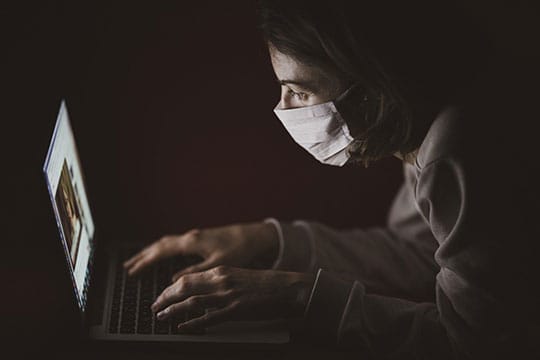The words “remote access” meant nothing to many workers before the COVID-19 came and changed the way we work. However, individuals and companies had to adapt rapidly, when the first lockdown came into effect. Now that the concept of remote access has become something many of us live with every day; let’s look at what needs to be taken care of, so that companies can avoid problems, that it may cause. A case study, found at the end of the article, will help to understand better.
The Three Pillars of Remote Access

The danger with remote access for a company is that it ends-up losing money. This is the reason why it exists in the first place. To avoid such a situation, three elements have to be taken into account: Speed, security, and scalability. The network proposed to employees in remote access should offer maximum capacities for these three topics. Otherwise, there is a good chance that the company will find itself slowing down by wasting time and energy. Apparently, this will translate into losses.
We will look in-depth into these various points. But before that, it is crucial to look at how a company can provide remote access to its employees. There are two ways to do so. The first had been the most common solution before we entered into the coronavirus era. This was through a Virtual Private Network (VPN). However, legacy VPNs are not adapted anymore, in many cases, as they present weaknesses, on the user’s side. In fact, a VPN depends a lot on the capacity of the user’s device capability and configuration. These often are not sufficient enough to protect the network.
The other possibility is a scalable remote access solution. This turns the connection between the company’s server and its employees into a virtual session, on a server horsepower, or into a cloud system. Since the network doesn’t depend as much on the users’ devices anymore, it is much safer and less limited.
Recommended for you: Tips for Self-development as a Remote Software Developer in COVID-19.
1st Element: Speed

Time is money. Although it is an expression, it is also a reality that companies have to think about when they have employees working through remote access. It is quite easy to understand why. If a system is too complex, the performance of the users will go down. That in itself will cause them frustration which will add to the problem, slowing the employees even more. The only way to know that a network is fully operational is if the users do not feel any difference whether they use it from work or from home.
The speed of the system itself is crucial to the continuity of the work. If the bandwidth is not sufficient for the employees, when they access the application servers, the company will start losing money. The slower it will be, the more time and energy will be wasted. The cost of additional bandwidth will never be as great as the losses it can cause if it is not wide enough. However, no matter how much a company prepares its servers to be strong and fast, it will always have to deal with the connection on the user’s side. Residential connections can be slow and unreliable; something the company won’t be able to fix easily.
2nd Element: Security

When a company opens remote access of its servers, to its employees, it puts itself at risk, immediately. It doesn’t matter if there are 10 or 1,000 users, the risks will be the same, and so, the security system needs to be perfect, right from the start. That’s because there are a large variety of outside threats, that can cause harm to the network in many different ways. From data loss to phishing and even ransomware attacks, the dangers lurking in the virtual world.
There are three protocols that need to be addressed, in order to maintain basic security that protects the servers of the company.
First, the system needs to be able to conduct an endpoint posture assessment. It means that whenever a user wants to connect to it, the system will first run a scan, to see if the end-user device is compliant with security policies.
Secondly, the system must be built to protect itself against keylogging and other malware. It is quite complex as these can happen through file exchanges and clipboard data.
The third protocol, which needs to be included, is the deployment of robust endpoint protection. It needs to exist on both sides (end users/company’s servers) and needs to be stronger than the traditional definition-based antivirus products. The solution must include behavior analytics and advanced persistent threat protection.
3rd Element: Scalability

One of the biggest problems a remote access system faces is that it may need to grow rapidly, according to the number of employees accessing the network, at any time. To make sure its scalability is adapted, there are three pieces to the puzzle: Software licensing, network bandwidth, and hardware capacity.
Software licensing is usually the easiest problem to solve. That’s because most of the software companies offer licenses adapted to the company’s needs. In general, the software will charge a fee per user; so any amount of new users can be added at any time. Otherwise, they usually come in bundles. You then pay a given fee for a maximum number of users.
Network Bandwidth needs to be carefully planned ahead, as it is not as easy to solve as software licensing. Having an excess of bandwidth should be the rule inside a company; whenever the number of users increases, the bandwidth should still sufficient to keep them all working at a normal speed.
The same strategy applied to the management of network bandwidth should be applied to hardware capacity. Planning ahead is the only way the company won’t slow down when it adds users to the network. Otherwise, adding hardware resources (firewalls, servers) will take the time that you won’t have if it suddenly becomes an urgent need.
Planning ahead is the key to many of the problems with remote access. We will discover it in the case study below. Adapting rapidly is also of first importance. But one will only be able to do so if it has planned ahead.
You may like: How More Companies are Venturing in Digital Transformation in the Wake of the Health Crisis?
Case Study: Laptops, Remote Access, Cybersecurity, and Zoom keep a Tucson-based Clinic working through COVID-19

No one was prepared to face the pandemic when it arrived and forced lockdowns around the world. It was the case for COPE Community Services. It is a non-profit behavioral and physical healthcare organization, serving more than 15,000 clients in Pima County. But the rapid response by management saw immediate changes in the work method and kept the clinic open. Here is the story.
The Secret: A Rapid Response Plan

The healthcare delivery service at COPE Community Services was completely disrupted by COVID-19. For the clinic to remain open, a rapid response plan had to be thought of and put in place. In the end, patients were mostly unaffected by the changes, thanks to great decisions made by management. These were taken in the light of the prognostics made by the National Council for Behavioral Health, in April, as the crisis was growing. It indicated that a survey they made led them to believe that nearly two-thirds of respondents (clinics like COPE) would be unable to survive for longer than three months through COVID-19 conditions.
Most of the other clinics were cutting staff. But Rod Cook, the CEO of COPE, had a different mindset. He knew that he had to react if he did not want to find his clinic in the same position. He understood that he had to keep his employees working from home. So the first thing he needed to do was to find ways to provide remote access to company resources securely. Because legacy VPNs were not adapted to the current cybersecurity challenges. Once he took care of that, he needed to find a communication tool that would work efficiently. And like so many others did this year, he decided to go with Zoom. He bought laptops and secured them before handing them out to his employees, so they could work remotely.
You may also like: VPN vs RDS vs VDI: What to Choose for a Secure Remote Access?
Being Prepared for Emergency Situations

The CEO of COPE Community Services said in an interview that there is no doubt in his mind that having an in-depth business continuity plan got them survived this crisis. It helps to prepare to face any situation that may come up. Without it, you may not have the time to put together a solution, before you need to close down.
COPE Community Services based its emergency plan on three aspects: remote workforce, revenue cycle management continuity, and telemedicine. It was not easy to put in place in such a short amount of time. But, they were able to find all the solutions needed to keep the clinic open. Of course, in a completely different way than usual. Finding 50 laptops rapidly, at a time when production and distribution were so greatly disrupted, was no easy task. But, private connections enabled the clinic to get them within four days and put everyone at work again.





